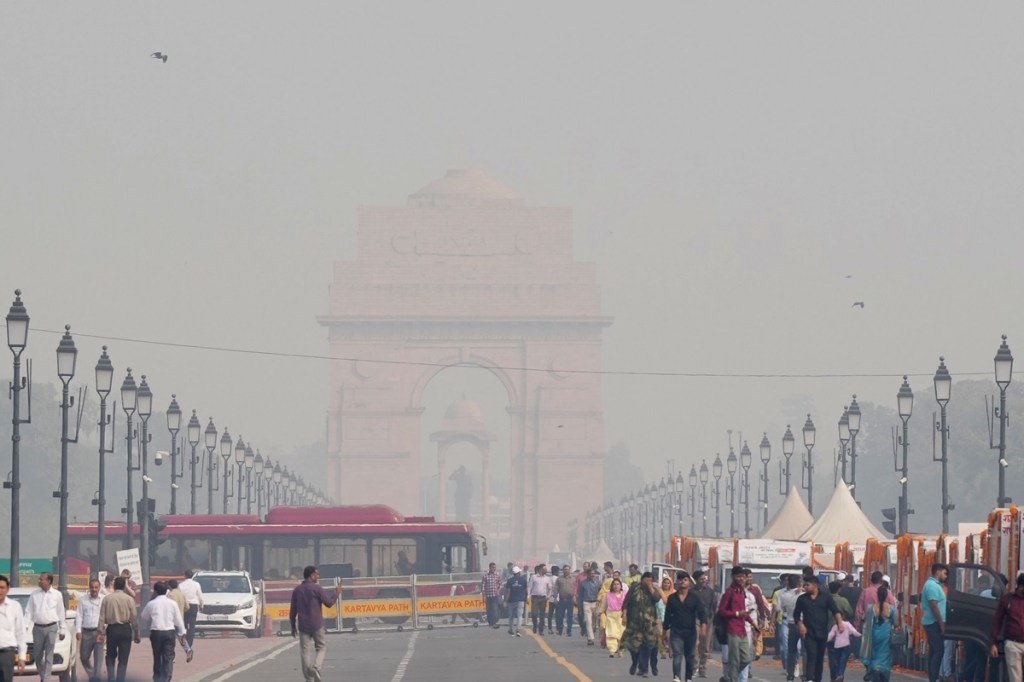After more than a week of hazardous pollution, Delhi’s air quality saw an improvement on Friday morning due to overnight rainfall. At 7 AM, Delhi’s AQI registered at 408, an improvement from the 437 recorded at 4 PM on Thursday.
Data released by the System of Air Quality Forecasting and Research (SAFAR-India) reveals that the AQI in Ashok Vihar reached 462 (severe), while the RK Puram area’s AQI stood at 461 (in the severe category). Punjabi Bagh stood at an AQI of 460 (severe), while ITO reported 464 (severe category).
Also Read: Delhi’s air quality remains in ‘severe’ category ahead of Diwali
Gurugram maintained an AQI of 416, classifying its air quality as ‘severe.’ In contrast, Faridabad and Noida recorded 457 (severe) and 375 (very poor), respectively.
However, Delhi witnessed a marginal dip in the Air Quality Index (AQI) at the Indira Gandhi International Airport, measuring 391 (very poor), while at Lodhi Road, it stood at 398 (very poor).
The India Meteorological Department (IMD) had earlier predicted a slight improvement in air quality just ahead of Diwali, owing to favourable meteorological conditions, including light rain.
Also Read: Delhi air quality slips back into ‘severe’ category, AQI at 421
IMD officials also noted that a shift in wind direction from northwest to southeast, attributed to a fresh western disturbance impacting northwest India, would help reduce the contribution of smoke from crop residue burning.
Once the western disturbance passes, wind speeds are expected to increase from five to six kilometers per hour at present to around 15 kilometers per hour on November 11, aiding in the dispersion of pollutants ahead of Diwali on November 12.
Factors leading to Delhi air pollution
Data from the Decision Support System, a numerical model-based framework for identifying pollution sources, showed that crop residue burning in neighboring states, particularly Punjab and Haryana, contributed to 38% of Delhi’s air pollution on Wednesday, which decreased to 33% on Thursday and is anticipated to be 16% on Friday.
Unfavourable meteorological conditions, combined with vehicle emissions (contributing 12 to 14%), paddy straw burning, firecrackers, and other local pollution sources, contribute to hazardous air quality levels in Delhi-NCR during winter.
According to the Delhi Pollution Control Committee (DPCC), peak pollution in the capital occurs from November 1 to November 15, when incidents of crop residue burning in Punjab and Haryana increase.
Delhi government plans to introduce ‘artificial rain’
In light of worsening air quality, the Delhi government is planning to induce artificial rain through cloud seeding on November 20–21, with a proposal to be submitted to the Supreme Court, which is addressing air pollution-related petitions.
The government rescheduled the winter break for schools, shifting it to November 9–18 due to the deteriorating air quality.
Delhi Environment Minister Gopal Rai announced a ban on app-based taxis’ entry into the national capital per the Supreme Court’s directives and noted that the odd-even car-rationing scheme would be implemented after a court review of its effectiveness, with the matter to be heard on Friday.
Doctors said that breathing polluted air in Delhi is akin to the harmful effects of smoking approximately ten cigarettes a day. Prolonged exposure to elevated pollution levels can lead to or exacerbate respiratory issues and substantially increase the risk of cardiovascular disease.
Restrictions under the final stage of the Centre’s air pollution control plan for Delhi-NCR, known as the Graded Response Action Plan (GRAP), have been put in place. Stage IV of GRAP includes a ban on construction activities and the entry of polluting trucks into Delhi.
Delhi’s air quality ranks among the worst in the world’s capital cities, and according to a report by the Energy Policy Institute at the University of Chicago (EPIC) in August, air pollution is reducing life expectancy in Delhi by nearly 12 years.
